"I cannot abide that passion for caressing new-born children," wrote the French essayist Montaigne towards the end of the 16th century. "I have never willingly suffered them to be fed in my presence." (Not a man for our own day, Montaigne.) He was reacting against the idea of "coddling" children. Montaigne's stoical acceptance of the deaths of five of his six children "without great sorrow" also belonged to an age when the demographics of child mortality meant that parents hardly dared attach themselves to their offspring before the age of 18 months or so. Fifty years after Montaigne, a neighbor reassured a woman who had recently given birth to her fifth "little brat" in the following, seemingly callous, words: "Don't worry. Before they are old enough to bother you, you will have lost half of them, or perhaps all of them."
The children who fared best, in terms of affection and lifestyle, were of course the essential heirs to the royal or noble houses. Pride in the dynasty was very often expressed in mother and child studies: one thinks of Anne of Austria and Louis XIV, then Louis XIV's own wife Marie Therese proudly with the Dauphin Louis, painted by Pierre Mignard, mother and son in matching red plumes, the modern equivalent of themed clothing. But pictorially these are tiny adults: there is no celebration of childhood here, only dignity of race or, one might say, arrogance of survival. Anne of Austria was considered eccentric in the amount of time she spent with Louis ("It is her great pleasure in life," wrote her lady-in-waiting in amazement). The treatment of Louis XIV's son was more normal. The cheerful little figure in his red plumes was not so cheerful in real life: the Dauphin Louis was beaten so often by his governor, Charles de Saint-Maure, duc de Montausier, that his spirit was completely cowed (as if it were not bad enough being the only legitimate child of the Sun King). Rank, in short, did not save even royals from being treated as little brats.
Where little brats and royals alike were concerned, however, an important shift in attitudes was coming. For one thing, they were surviving infancy, which led parents to be less concerned to suppress their affections; but most striking of all, yesterday's brats were discovered to be today's innocents. A manual of education, The Honest Boy, expressed a revolutionary sentiment: "Who would dare to say that God favors older people more than children? He favors them on account of their innocence, which comes close to sinlessness." This is a far cry from earlier doctrines of original sin - according to which children were born bad and had to have the devil beaten out of them.
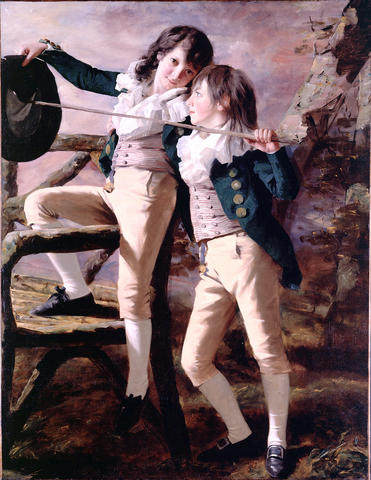
PHOTOS: COURTESY OF DULWICH PICTURE GALLERY
'Infants incarnating virtue'
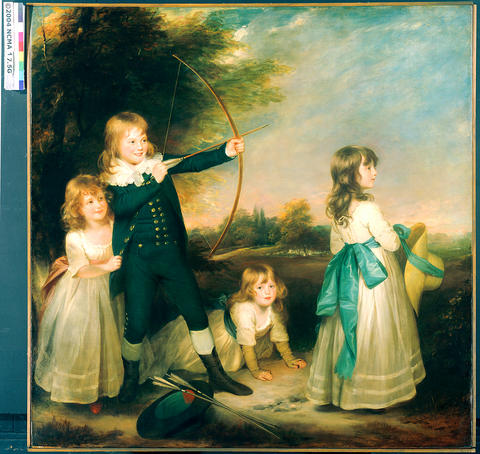
A ravishing new exhibition at Dulwich Picture Gallery in south London, The Changing Face of Childhood, demonstrates the evolution of this new idea of innocence in a series of sublime portraits of youth by artists from Anthony van Dyck to Thomas Lawrence. The accompanying catalogue, edited by Mirjam Neumeister, is both sumptuous and illuminating. It shows a chilling image from the bad old days by Jan Steen, entitled Children Teaching a Cat to Dance. The pet is held cruelly upright, watched by a dog that is evidently just as vicious and waiting for the end of the "dance" to have his own fun. It is a relief to turn from this to a picture included in the exhibition: William Beechey's Portrait of Sir Francis Ford's Children Giving a Coin to a Beggar Boy, painted in 1793, is the quintessential symbol of the change. This time a benevolent dog gazes on, while a ragged boy of perhaps 12, with no shoes and a depressed expression, extends his hand. Here is no human pet to be teased. Master Ford, exquisitely fair-haired under a merry black velvet plumed hat, and wearing a cherry-colored suit, watches sympathetically while his sister, equally fair, holds out her hand bearing alms. The two of them remind one of the famous exclamation of Pope Gregory the Great on seeing two blond children from the distant country of England: "Non Angli sed angeli." These are infants incarnating virtue: in this case charity.
Van Dyck, painting Louis XIV's first cousins, the future Charles II and his siblings, was possibly the first court painter to delineate children as human beings, whether princes and princesses or not. Where pets are concerned, the huge mastiff in Van Dyck's most famous painting of the royal children is still formidable. But 20 years later, the youngest child of that family (born too late for Van Dyck's serene picture), Henriette Anne, had grown up to be the seductive, capricious star of the French court, and she is most famously depicted cuddling her equally spoilt spaniel, Mimi. Henriette Anne even danced the formal court ballet with her darling Mimi in her arms.
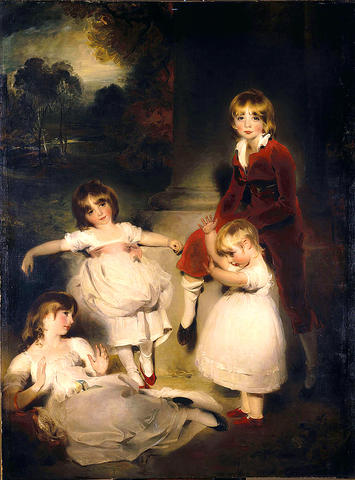
Playtime arrives
Significantly, the attitude to children's toys, as well as pets, altered as the brats became innocents. If children were not to be used to prop up their parents' ambitions, but were to enjoy a life of their own, the question of their toys and pastimes altered its emphasis. What kind of toys would children actually like to possess? Dolls and toys on wheels begin to litter portraits of kiddies in white ruffles and blue sashes (Goya placed special emphasis on objects such as the hobby horse in his portrait The Family of the Duke of Osuna). Many an 18th-century child must have, in the words of Keats, "Sway'd about on a rocking-horse/And thought it Pegasus." The Noah's Ark was considered to be a suitable toy even in Puritan households, and even on Sundays, because of its biblical implications.
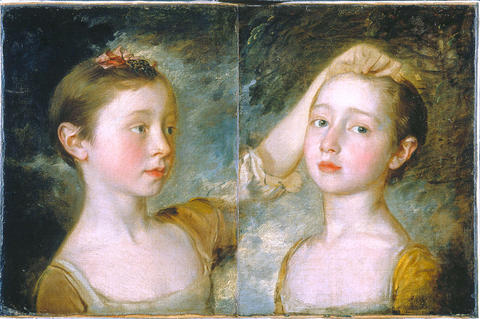
How one would have liked to visit the famous "Frost" toy fair held in the winter of 1715 on the (frozen) River Thames in London. The sound of the hurdy-gurdy, peep-shows, as well as dolls and dolls' houses for sale ... a kind of Disneyland avant la letter, chillier but much more picturesque than Florida. "Baby houses," as dolls' houses were then termed, are after all based on the principle that small is beautiful: and thus small people are more delightful than big people. In 18th-century England, Robert Adam, Sheraton and Chippendale were involved in the making of them.
John Locke, the English philosopher, spearheaded this movement for change in an enormously influential work of 1693, Some Thoughts Concerning Education: practical advice for the "sons of gentlemen" (given by Lord Chesterfield to his son and also to Richardson's Pamela by her pursuer Mr B). Locke's concept of a child's mind as a clean slate on which anything and everything could be written led in turn towards Rousseau. His study of a young boy, Emile (published in 1762, the same year as his Social Contract), had a profound effect on educationalists down the years, including Froebel and Pestalozzi in the 20th century. Here was no "fry of treachery," as Young Macduff's killers described him, or a malignant imp as Queen Elizabeth I once described James VI of Scotland, but an innocent boy. Now Horace Walpole wrote sentimentally about the portrait of the child Miss Sarah Price at the Royal Academy in 1770:
"Never was more nature and character than in this incomparable picture which expresses at once simplicity, propriety, and fear of her cloths being dirtied, with all the wise gravity of a poor little Innocent." What a contrast with Holbein's portrait of the young Prince Edward VI, heir to Henry VIII, in the middle of the 16th century. The Latin legend beneath the ostentatiously regal study reads: "Little one, emulate thy father and be the heir to his strength" - no innocence for this future sovereign, but the immediate terrifying admonition to grow up just like Henry VIII.
Breast wasn't always best
Among other "natural" practices, Rousseau was a strong advocate of breastfeeding (in contrast to Montaigne), a function that in itself presupposes special tenderness towards the child. It is notable that in the rather tame sequel to Pamela, Richardson has his goody-goody heroine breastfeed her child. Hitherto queens and noblewomen had delegated this important maternal bonding task to wet nurses. One of the unacknowledged reasons for the mother of potential heirs to thrones and fortunes to avoid breastfeeding was that it was popularly (if inaccurately) supposed to prevent conception. Impelled by the newly fashionable spirit of Rousseau, Marie Antoinette was passionately determined to nurse her longed-for first child, born after eight years of marriage. The court reaction may be described as shock ... the queen of France breastfeeds her own child! Her dominating mother, the Empress Maria Theresa, greeted the news with open disapproval. The reason was expressed in a popular rhyme of the time, which began, "A Dauphin we asked of our Queen" and ended with the hope "Young Cupid will quickly appear." For the child was a girl, unable under French law to inherit the throne: in short, Marie Antoinette was to get back to work and produce an heir as soon as possible.
The queen did not give up altogether on her plan. Marie Antoinette, so often pilloried as personifying the old order, had in fact a devotion to Rousseau and his ideas. It led her to make a sentimental pilgrimage to his tomb, the simple good taste of which was much admired. The sardonic Baron Grimm, who recorded the occasion, thought that none of them, including Marie Antoinette, had any thought for the memory of the man; but like many cynics, he was wrong. The idea of a social contract might have left her cold, but Marie Antoinette, in her approach to her children's education and the idea of maternal closeness, as well as sensibility and simplicity, was definitely Rousseau's pupil. So the queen of France did at least nurse her daughter for about four months. However, when the desired boy appeared three years later, she was not even allowed to hold him before he was whisked away to the royal wet nurse known as Madame Poitrine because of her capacious bosom. Rousseau would not have approved.
Certainly the petted children of Marie Antoinette are painted as little angels by Madame Vigee Le Brun, rather than tiny, bejewelled hieratic figures: this is innocence (and maternity) being celebrated rather than royalty. In her last state portrait of 1787, also by Vigee Le Brun, Marie Antoinette wears regal red velvet and black fur rather than the white muslins that were criticized as being too informal, but she is careful to surround herself with children, one cherub on her lap, one leaning lovingly against her, a third pointing to the empty cradle of a recently dead baby. It was all intended as a propaganda exercise: a queen, but also a tender mother of innocent children. A large jewel box was intended as a reference to the Roman paragon of virtue, Cornelia, mother of the Gracchi, who had famously designated her own children when asked to display her greatest treasures. This is the public celebration of contemporary motherhood, to be matched with the celebrated "private" picture of Marie Antoinette's friend, Georgiana, the beautiful Whig Duchess of Devonshire, and her baby by Reynolds in 1784. Here, both mother and child ignore us and concentrate on each other. Georgiana the mother throws up her hand, and Georgiana Cavendish, the baby, copies her in ecstasy: it is surely one of the tenderest expressions of the new maternity ever painted.

June 2 to June 8 Taiwan’s woodcutters believe that if they see even one speck of red in their cooked rice, no matter how small, an accident is going to happen. Peng Chin-tian (彭錦田) swears that this has proven to be true at every stop during his decades-long career in the logging industry. Along with mining, timber harvesting was once considered the most dangerous profession in Taiwan. Not only were mishaps common during all stages of processing, it was difficult to transport the injured to get medical treatment. Many died during the arduous journey. Peng recounts some of his accidents in

“Why does Taiwan identity decline?”a group of researchers lead by University of Nevada political scientist Austin Wang (王宏恩) asked in a recent paper. After all, it is not difficult to explain the rise in Taiwanese identity after the early 1990s. But no model predicted its decline during the 2016-2018 period, they say. After testing various alternative explanations, Wang et al argue that the fall-off in Taiwanese identity during that period is related to voter hedging based on the performance of the Democratic Progressive Party (DPP). Since the DPP is perceived as the guardian of Taiwan identity, when it performs well,

A short walk beneath the dense Amazon canopy, the forest abruptly opens up. Fallen logs are rotting, the trees grow sparser and the temperature rises in places sunlight hits the ground. This is what 24 years of severe drought looks like in the world’s largest rainforest. But this patch of degraded forest, about the size of a soccer field, is a scientific experiment. Launched in 2000 by Brazilian and British scientists, Esecaflor — short for “Forest Drought Study Project” in Portuguese — set out to simulate a future in which the changing climate could deplete the Amazon of rainfall. It is
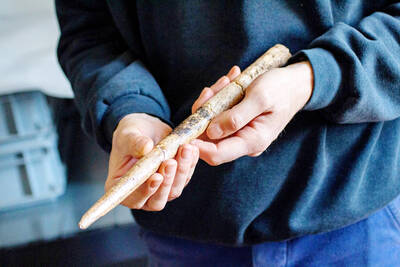
Artifacts found at archeological sites in France and Spain along the Bay of Biscay shoreline show that humans have been crafting tools from whale bones since more than 20,000 years ago, illustrating anew the resourcefulness of prehistoric people. The tools, primarily hunting implements such as projectile points, were fashioned from the bones of at least five species of large whales, the researchers said. Bones from sperm whales were the most abundant, followed by fin whales, gray whales, right or bowhead whales — two species indistinguishable with the analytical method used in the study — and blue whales. With seafaring capabilities by humans